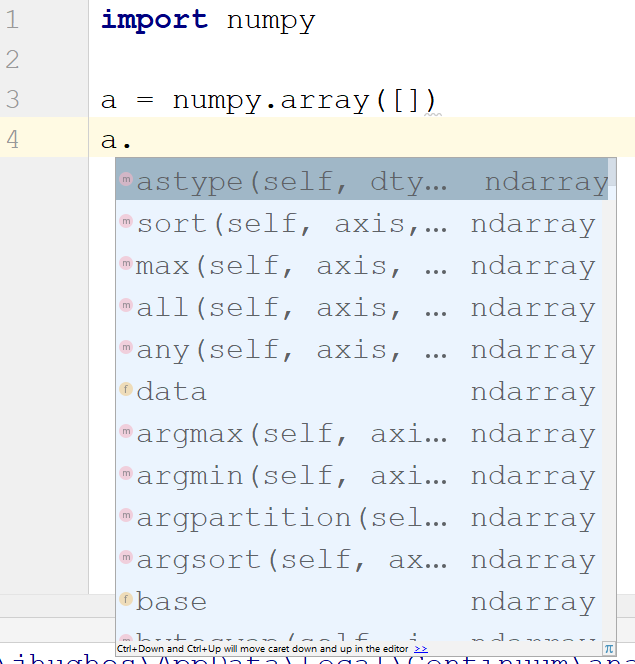Topic #13 – Objects¶
Like it or not, you’ve already been using objects for a while now
- But you may be wondering what the point is
- Or you may even hate them and find them confusing
Function vs Method?
Variable vs Property/Attributes?
For better or worse, you will have to get used to them. So start loving them.
Big reasons Computer Scientists like objects is because of abstraction and the logical encapsulation of stuff.
- We get to focus on what as opposed to how (and sometimes ignoring the why altogether)
Using functions without worrying about how it works, but just that it works
- Eg: Do you know how to turn on a car? Do you need to know how the car works to turn it on?
Answering how really depends on the level of abstraction we’re talking about



Objects and Abstract Data Structures (ADT)¶
- You get to make this up now; what kinds of data do you want?
Do you want car data structures?
Human data structures?
Cookies?
You get to say what the data is and looks like
You get to say how the data will act
You get to define what you will do with it
- These ADTs can be simple
cars
humans
cookies
- Or complex
lists
dictionaries
sets
Remember Numpy Arrays?¶
Numpy arrays are Objects/Abstract Data Types
Sure, you didn’t define them, but someone did
You looked up how to use the numpy arrays, but we didn’t care about how they worked on the back end
These ADTs came with a bunch of attributes and a bunch of methods too
Activity
Open up Python and create some numpy array of something called
aNow type
a.(the a followed by a period) (sometimes you have to hit tab too). You should see a list of things like this:These are either attributes/properties or methods
a.dtypeis an example of an attribute. It will tell you something about the objecta.sum()is an example of a method. It went through the array and summed up the contents (mind the parentheses btw)
Look how easy it is to sum the contents of the array
You could have written the code to do it, but… why?
Chances are if you used this method, you would be using it to solve bigger problems
Later, you may use the solutions to the bigger problems to solve even BIGGER problems
The point is
You could learn how an internal combustion engine works before turning on the car
That seems like a big waste of time
Why not use the implementation someone else created to use the car to solve your bigger problems!?
Implementing Objects/ADTs¶
So that gives us some motivation for why objects/ADTs are cool.
Despite me just saying that we won’t worry about how they work… well, we are now going to worry about how they work.
The point is, we are now going to learn how we can build some so other people (or you) can not worry how they work
Just like the rest of this class, we will learn by doing, so let’s start doing.
Let’s Make a Simple Object/ADT¶
All objects/ADTs, regardless of how simple or complex they are, are all build with the same basic things.
But we’re going to start really simple.
- I want to make an
EnthusiasticStudentobject What I mean is, someone had to write what a numpy array was… we’re going to write what it means to be an
EnthusiasticStudent
- I want to make an
- To create our own object, all we really need are 3 things:
A constructor
Attributes/properties
Methods (and the constructor is actually a method too)
Attributes — Properties about the object.
Methods — Things we want our object to do.
- To determine which attributes/properties we want our object to have… well, we have to think about it… what do we want the object to have?
First name
Last name
Student number
Currently average
… (whatever else we want really)
We get to make it up!
- Same goes for methods. What methods do we want this object to have?
Ask for a higher mark
Show off in class how smart they are
Work painfully hard on assignments
… (again… whatever else we want
Cool.. but how do we tell python all this?
Warning
Follow along (for real, having a copy of this on your comp will make your life easier)!!!
Write this at the top of some cell in Colab
class EnthusiasticStudent:.Warning
If using PyCharm or Spyder, you can put everything in the same script, or alternatively, you could do the better thing and put all classes in their own files. I’d recommend this.
This tells python Hey, everything that follows is gonna be about the EnthusiasticStudent
Classes do not need to be in their own files, but it’s often a good call
1class EnthusiasticStudent: 2 ''' 3 Obv we'll include a nice comment at the top of the class to explain what it's for... right?! 4 5 This EnthusiasticStudent is being used to demonstrate how we can create our own Objects. 6 7 It's going to have a few attributes and some simple functions. 8 ''' 9 10 # this is it so far :/
Let’s write a constructor
It’s a special method that tells the computer to make, or initialize the object.
Classes don’t have to have constructors, but to use objects the way we want to here we need one
- It will tell the computer to go create the object somewhere in memory along with running some setup code for us
What setup code? Good questions. The answer is… whatever you need!
1class EnthusiasticStudent: 2 ''' 3 Obv we'll include a nice comment at the top of the class to explain what it's for... right?! 4 5 This EnthusiasticStudent is being used to demonstrate how we can create our own Objects. 6 7 It's going to have a few attributes and some simple functions. 8 ''' 9 10 def __init__(self): 11 ''' 12 So the above line of code is the special words for python that means CONSTRUCTOR 13 Notice that it has parentheses, and a parameter called *self* 14 Self is a special variable thing that is a reference to... itself... 15 '''
def __init__(self, x1, x2, x3, x4, x5,..., xn):is how we start our constructor- Notice how it can take any number of parameters we want
Just like a function/method… because it is a method
- It actually has to take at least one parameter; it has to get a parameter that’ll be a reference to itself
It doesn’t need to be called
self, however if you don’t call ifselfthe world will hate you
…
Wait…
selfis a reference to… itself? … wut?This is kinda’ weird, but totally makes sense
It’ll become more obvious as we go.
Let’s keep writing our constructor by adding some meaningful code (setting attributes):
1class EnthusiasticStudent: 2 ''' 3 Obv we'll include a nice comment at the top of the class to explain what it's for... right?! 4 5 This EnthusiasticStudent is being used to demonstrate how we can create our own Objects. 6 7 It's going to have a few attributes and some simple functions. 8 ''' 9 10 def __init__(self, first_name='John', last_name='Doe', student_num='000000000', current_avg=0): 11 # Let's just set attributes for now 12 self.first_name = first_name 13 self.last_name = last_name 14 self.student_num = student_num 15 self.current_avg = current_avg
first_name, last_name, student_num, and current_avg are attributes I am giving the object. Each instance of a EnthusiasticStudent will have these attributes, but their values will differ between instances. Think about humans. We all have a name attribute, but our individual names will differ.
Activity
Outside the class, type the following (if using an IDE with multiple files in the same project, open up a new/different python file in the same project):
1#from EnthusiasticStudent import * # Only need this if using multiple files in IDE
2a_student = EnthusiasticStudent()
Figure out how to get the first name from
a_studentWhat is the
typeofa_student? ThetypeofEnthusiasticStudent? How aboutEnthusiasticStudent()?Create a new, different student, but this time set the first name to something else. Check its attributes.
Add a print statement saying “im running from inside a constructor” to your constructor right below where we assigned the attributes. Re-run the code above. What happened? Why?
We can put whatever code we want in the constructor. Just in our case, setting the attributes is enough to get what we want done.
NOTE
selfis pretty important here. If you forget the self, would you be creating an attribute for the object, or a local variable for the constructor?
Let’s add some functions/methods to this class.
1class EnthusiasticStudent: 2 ''' 3 Obv we'll include a nice comment at the top of the class to explain what it's for... right?! 4 5 This EnthusiasticStudent is being used to demonstrate how we can create our own Objects. 6 7 It's going to have a few attributes and some simple functions. 8 ''' 9 10 def __init__(self, first_name='John', last_name='Doe', student_num='000000000', current_avg=0): 11 self.first_name = first_name 12 self.last_name = last_name 13 self.student_num = student_num 14 self.current_avg = current_avg 15 16 def ask_for_higher_mark(self, howHigh): 17 print('Hello Professor,\n\nMy name is ' + self.first_name + ' and I am in your CSCI 161 class. I would really like it if you could just give me a ' + str(howHigh) + '%. \n\nThanks,\n' + self.first_name + ' ' + self.last_name) 18 19 def show_off(self): 20 print('I got 100 on my last assignment everyone. I\'m a wizard') 21 self.first_name = 'Wizard' 22 23 24 def work_too_hard_on_assignment(self): 25 # I left it blank. Add whatever code you want here. Be sure to delete the pass keyword when you do though 26 pass
Activity
I have no idea what the code would look like in the
work_too_hard_on_assignmentfunction, so just make up your own. Make it do whatever.Create an instance of an
EnthusiasticStudentand figure out how to call the functions. Is there an easy way to see all available?What happens to the attributes of the object after calling
show_off?
__repr__¶
There are a lot of other special functions for classes that you don’t need, but are super handy. Here are 2 cool ones.
1def __repr__(self): 2 ''' 3 A method which will return some string representation of the object. This will he handy for debugging and stuff. 4 ''' 5 return 'First Name: ' + self.first_name + '\nlast_name: ' + self.last_name + '\nStudent Number: ' + self.student_num + '\nCurrent Average: ' + str(self.current_avg)
Activity
Add this function to your code.
Now in your other script call the
__repr__() `` method on the ``a_studentobject.Call
print(a_student). What happens?Run this
a = str(a_student), and then check out thetypeofa.
__eq__¶
What does it mean for 2 EnthusiasticStudent objects to be equal?
Activity
Create 2 instances of an
EnthusiasticStudentobject. Call themaandb.Call
a == b. What happened? How would python know what it means for twoEnthusiasticStudentobjects to be equal?Copy the below code and re-run.
1def __eq__(self, anotherThing):
2 '''
3 A method to check if 2 EnthusiasticStudent are the same. What does it mean for 2 things to be the same?
4 Well, WE get to make that up!
5 (Although, we should pick something that makes sense...)
6 '''
7 return self.student_num == anotherThing.student_num
Now call
a.__eq__(b). What happens?Now call
a == b. What happens?
The above code may also make it somewhat obvious why the self reference is important. Which instance of the object do we want the student_num attribute from?
